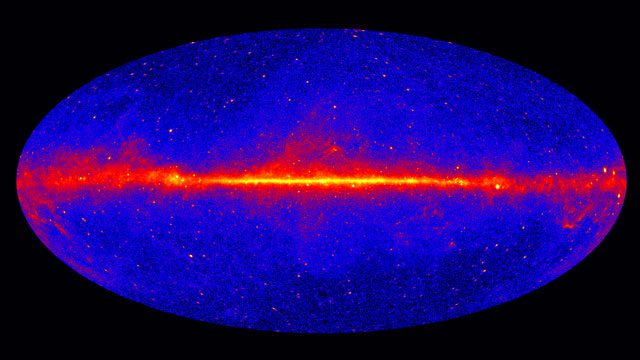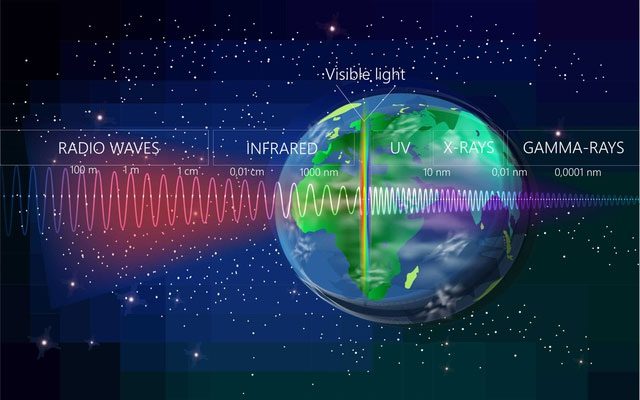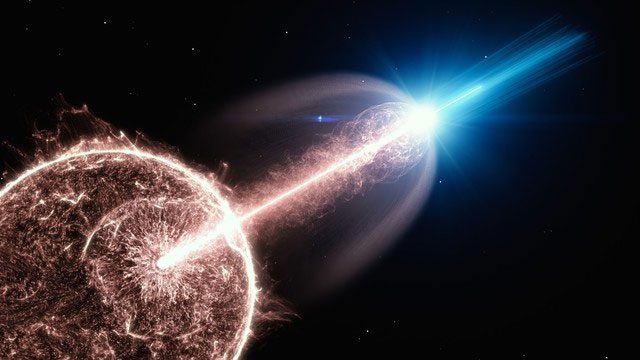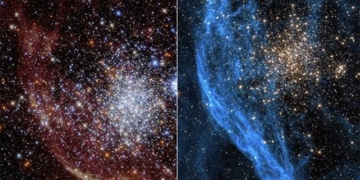In the universe, there exists a terrifying type of radiation that can penetrate all matter and annihilate all forms of life. This radiation was discovered by French physicist Paul Villard while he was researching radioactive elements. He inadvertently found a new ray that was more powerful than X-rays, which he named gamma rays.
The gamma rays generated by humans are not the most fearsome. In the universe, there is a phenomenon capable of producing gamma rays far beyond human imagination: gamma-ray bursts.
Gamma-ray bursts are the most intense electromagnetic radiation phenomena in the universe. They can release immense amounts of energy in just a few seconds, far exceeding the energy that the Sun can emit over its entire lifetime.
This level of energy is sufficient to destroy everything and even alter the structure of the entire universe. The discovery of gamma rays has opened up a new horizon for humanity, allowing us to explore the deepest mysteries of the universe.
However, gamma rays are a double-edged sword, capable of bringing both benefits and disasters to humankind.

Gamma-ray bursts are the most intense electromagnetic radiation phenomena in the universe.
The detection of gamma-ray bursts was an unexpected reward. In the 1960s, in order to monitor whether the Soviet Union was violating the treaty against nuclear testing in space, the United States launched a series of satellites equipped with devices capable of detecting gamma rays emitted by nuclear explosions.
However, these satellites detected several gamma-ray signals from deep within the universe. These signals were extremely powerful but also had very short durations, lasting from a few milliseconds to several minutes, moving in random directions without any discernible pattern. These signals marked the first discoveries of gamma-ray bursts.
Due to the technical limitations of that time, the origins of these signals could not be determined, and scientists could only speculate that they might be related to the explosions of stars or the formation of black holes.
The detection of these signals sparked significant interest in the scientific community and led to much speculation and debate. To better detect and study gamma-ray bursts, scientists continuously launched several specialized satellites and telescopes, including the American Astronomical Satellite in 1974, the European Astronomical Satellite in 1983, the U.S. Gamma Observatory in 1991, and the International Gamma Observatory in Europe, as well as the Swift satellite from the U.S. in 2008, among others.

The discovery of gamma-ray bursts was an unexpected reward.
These satellites and telescopes not only detected gamma rays but also captured electromagnetic radiation in other bands produced by gamma-ray bursts, such as X-rays, visible light, and radio waves. Through these satellites and telescopes, scientists have discovered thousands of gamma-ray bursts.
After decades of observation and analysis, scientists have identified two main causes for the production of gamma-ray bursts.
- The first is the explosion of a very massive star in the form of a supernova as it ages, leading to the formation of a black hole. During this process, the star’s interior gradually collapses, and a high-speed rotating disk structure known as an accretion disk forms around it. Material in the accretion disk is gradually consumed by the black hole, while two high-speed jets of material known as jets are expelled from the black hole’s poles. In these jets, a large amount of gamma-ray radiation is produced due to the effects of shock waves and strong magnetic fields. This type of gamma-ray burst is typically short-lived, lasting only a few seconds, and is therefore referred to as a short gamma-ray burst.
- The second type involves the merger of two very dense objects, such as black holes or neutron stars. Both of these objects are remnants of dead stars. When they come close enough, they attract each other and eventually collide, forming a larger black hole. In this process, an accretion disk and two jets are also formed, creating gamma-ray radiation. This type of gamma-ray burst often lasts for a longer duration, from several minutes to even hours, and is thus called a long gamma-ray burst. Further scientific studies have revealed that gamma-ray bursts occur not only deep within the universe.
According to scientists’ calculations, over the billions of years in Earth’s history, approximately every 5 million years, Earth faces catastrophic disasters caused by gamma-ray bursts. This means that since life began on Earth, it has endured the explosion and destruction of over 1,000 gamma-ray bursts. For many, the only event comparable to the destruction of life on Earth in their memory and understanding is the asteroid impact about 65 million years ago.

Approximately every 5 million years, Earth faces disasters caused by gamma-ray bursts.
However, scientists today tell us that the impact of an asteroid can be considered almost negligible compared to gamma-ray bursts. Through extensive study and research into Earth’s history, scientists have uncovered some evidence.
Five of the most severe mass extinction events in Earth’s history, notably the Ordovician mass extinction event, have previously led scientists to speculate that the primary cause of this extinction was a sudden shift in Earth’s climate from warm to cold, ultimately resulting in death.
However, scientists were still puzzled about what factor caused the Earth’s temperature to drop so suddenly. Until recently, a joint research team of biologists and physicists made a significant discovery regarding Ordovician trilobite fossils. They found clear evidence of gamma-ray exposure in the fossils.
This discovery provides scientists with answers as to why Earth’s temperature dropped dramatically at that time. When gamma-ray bursts pass through Earth’s atmosphere, they interact with molecules in the atmosphere, triggering a series of chemical reactions that lead to the destruction of the ozone layer. This exposure subjects surface-dwelling organisms to lethal ultraviolet radiation, resulting in large-scale biological extinction events.

Gamma rays passing through Earth’s atmosphere cause a series of chemical reactions that lead to ozone layer destruction.
Despite the devastating potential of gamma rays, they are also widely used and play a crucial role in industry and medicine. In industry, the penetrating power of gamma rays makes them an extremely useful tool. By using gamma rays, we can inspect the insides of metals and other objects, even very thick materials can be clearly seen using gamma rays.
This non-destructive testing method is extremely valuable for quality control, structural assessment, and product testing. In the medical field, gamma rays also play an important role. In radiotherapy, by utilizing the penetrating power of gamma rays, doctors can accurately target high doses of radiation at cancer cells to destroy or inhibit their growth.

Gamma rays can be used as tools for detecting dark matter and dark energy.
In addition to their use, the scientific community has also detected gamma-ray bursts in the universe. Gamma-ray bursts are the most violent explosions in the universe, helping us understand the origins, structure, and evolution of the universe, as well as the physical processes of celestial objects such as stars, black holes, and gravitational waves.
They can also be utilized as tools for detecting dark matter and dark energy in the universe, as they can penetrate the dense environment between stars to reach distant galaxies. This helps us understand the mysteries of the universe and assess potential threats to life on Earth, providing references for future prevention and response efforts.


















































